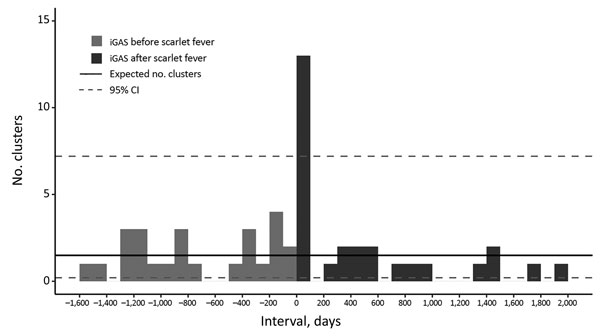Volume 25, Number 3—March 2019
Research
Increased Risk for Invasive Group A Streptococcus Disease for Household Contacts of Scarlet Fever Cases, England, 2011–2016
Figure 2

Figure 2. Distribution of time interval between onset of scarlet fever and iGAS within address-matched pairs (n = 53) and expected number of clusters, England 2011–2016. Exploratory analysis was used to identify the period of excess numbers of iGAS cases before review of case records; iGAS cases might be linked to >1 scarlet fever case episode in the same household. The background iGAS rate was 2.88 cases/100,000 person-years; 95% CI is based on 2 expected cases/100 days. There were 189,684 scarlet fever household contacts. iGAS, invasive group A Streptococcus infection.
Page created: February 19, 2019
Page updated: February 19, 2019
Page reviewed: February 19, 2019
The conclusions, findings, and opinions expressed by authors contributing to this journal do not necessarily reflect the official position of the U.S. Department of Health and Human Services, the Public Health Service, the Centers for Disease Control and Prevention, or the authors' affiliated institutions. Use of trade names is for identification only and does not imply endorsement by any of the groups named above.